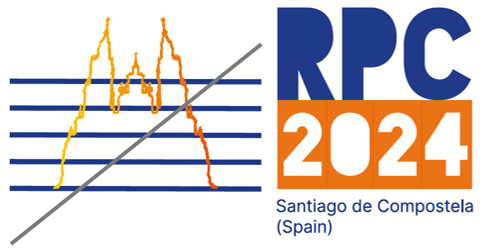Speaker
Description
The Multi-Strip, Multi-Gap Resistive Plate Chambers (MSMGRPCs) developed to fulfill the high counting rate and granularity requirements of the low polar angle region of the CBM-TOF wall showed very good performances in time resolution (50 ps) and efficiency (>90%), up to 30 kHz/ cm$^2$ counting rate, exposed on the whole active area. Considering that CBM will run in the average 2 months/year for about 10 years, comprehensive studies of the behavior of such detectors at high irradiation dose are mandatory.
Detailed studies of the aging effects induced in a MSMGRPC by high $\gamma$ irradiation dose showed a gas pollution effect. Higher deposition of radicals of different types on the whole surface, on both sides of the floating glass electrodes and noise rates around the spacers were evidenced with impact on the detector performance and artificial increase of the data volume in a free-running data acquisition mode. The solutions for the mitigation of such effects have been the design of MSMGRPC prototypes with a direct flow of the gas mixture, (100% gas transmission through the gas gaps) and replacement of the fishing line by discrete spacers. The exposure to high X-ray flux of a prototype with the new design demonstrated negligible aging effects even for rather low gas flow. We report in this contribution the construction details of the new architecture, results of extensive aging tests using high X-ray flux as well as the performance of the prototypes in terms of efficiency and time resolution obtained in the in-beam tests performed at SIS18, GSI-Darmstadt in the mCBM experimental setup. Details on the implementation of direct flow MSMGRPCs in the first CBM-TOF inner wall module – module M0- whose configuration is the most complex among the twelve CBM-TOF inner wall modules, will be presented.

